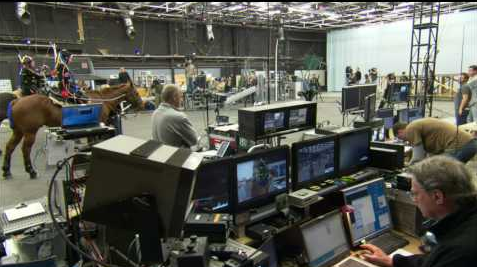Learning in the 21st Century (Part Five)
 Sunday, January 2, 2011 at 4:47PM
Sunday, January 2, 2011 at 4:47PM The debate is raging everywhere.
In Europe, the Bologna process has led to furious discussions about the purpose of universities largely because Bologna (a treaty signed among European nations to create some uniformity about the expectations governments have for the post-secondary sector) has pushed universities towards curriculum that is directly linked to job outcomes and job creation. In England, universities are evaluated on the number of jobs their graduates get and in Canada, labour market data is used to assess the effectiveness not only of degrees but also of the content of student learning. In the US, vocational schools and private for-profit colleges that emphasize job readiness are now celebrated for their effectiveness, even if their outcomes are spotty at best.
This argument about the effectiveness of learning and education has been at the core of the last two hundred years of post-secondary educational policy development and discussion. In Italy, highly qualified graduates cannot find jobs and a generation that is now into their thirties is looking at a bleak future. Although statistics tend to support the notion that getting a degree results in more security and more income over a lifetime, that research includes the boomer generation which had a much easier time finding jobs than their children.
And, I am not talking here about the quality of employment, jobs that are meaningful and lead to a richer life. I am simply referencing the debates about employment as statistical indicators of anticipated outcomes to learning.
The challenge, and it is a substantial one, is that the purpose, direction and importance of public education may be hidden by the way in which this discussion is being held. On the one side, call it the Humanities side (see Martha Nussbaum’s recent work) writers and policymakers try and defend the role and importance of learning, becoming critical and aware, in other words, students learning to understand what it means to be a citizen in a democracy. This means supporting the study of history, literature and the social sciences. It means supporting the importance of the arts in all of their forms. It means offering as diverse a curriculum as possible to increasingly diverse groups of students. It means taking some leadership on the importance of culture and cultural activity to the well-being of humans irrespective of background.
On the other side, are the pragmatists (those who would link that skills and outcomes in a linear fashion) who want the educational system to serve the needs of society and who see those needs through the labour market and the economy. They want educational institutions to retool and accommodate increasingly complex economic shifts by narrowing their curricula to serve immediate needs defined narrowly by data that is entirely quantitative.
21st Century learning however, now takes place in a different way and on terms that are not as clear cut as the opposition between humanists and pragmatists would suggest. Today, learning is substantively defined not only by the Internet and what it makes available, but also by the social networks that surround and increasingly define everyday life. We have entered an age of qualitative differentiation. What does this mean?
Learning experiences will be respected for their impact on the personal values of learners and how learners translate their values into pragmatic decisions.
Since learning takes place at all levels and at all times in an individual’s life, employment will be a function not only of what you know, but how well you have defined the context in which your learning can be translated into some outcomes. Learning one thing or learning in one way or learning a particular craft or skill will not suffice. Learning how to learn and maintaining and updating how you learn will be of far greater importance than ever before.
This is the true meaning of life-long learning and it is an exciting prospect because it means that public educational institutions will be essential arbiters of the future. Public institutions are the only places where the curriculum diversity that will be essential to economic and social and cultural health will be maintained. The struggle will be to define a middle ground among the stresses and strains created by overly narrow conceptions of economic need and the broader concerns for critical and historical thinking so essential to the learning process.
Distributed learning among many experiences within diverse venues will only work if learners of all ages can actively discriminate between good information and bad information. To learn means to choose and choices made without an understanding of context challenges the very essence of what it means to engage with work and one’s future.
More on this in the next installment of this series.



